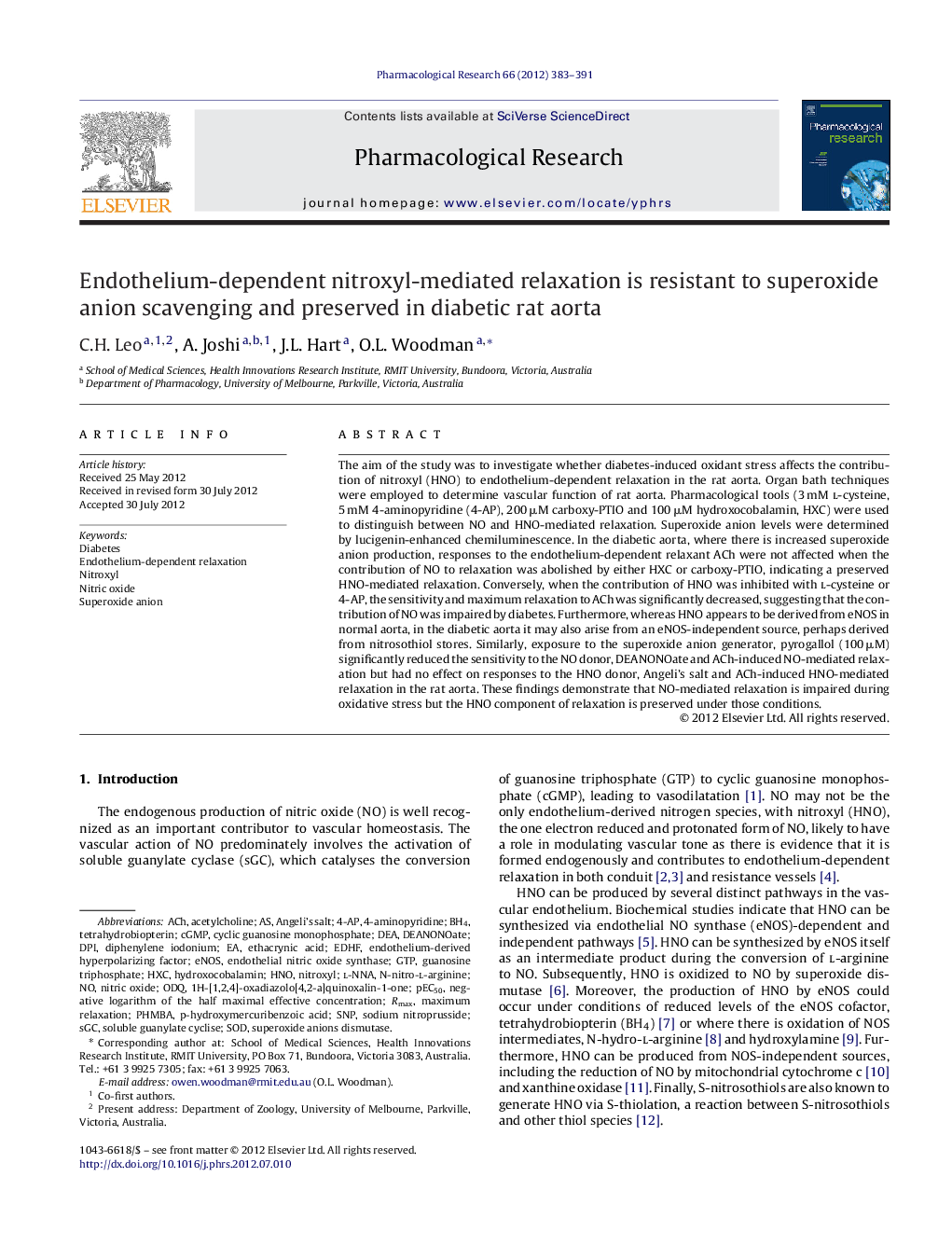| Article ID | Journal | Published Year | Pages | File Type |
|---|---|---|---|---|
| 2562025 | Pharmacological Research | 2012 | 9 Pages |
The aim of the study was to investigate whether diabetes-induced oxidant stress affects the contribution of nitroxyl (HNO) to endothelium-dependent relaxation in the rat aorta. Organ bath techniques were employed to determine vascular function of rat aorta. Pharmacological tools (3 mM l-cysteine, 5 mM 4-aminopyridine (4-AP), 200 μM carboxy-PTIO and 100 μM hydroxocobalamin, HXC) were used to distinguish between NO and HNO-mediated relaxation. Superoxide anion levels were determined by lucigenin-enhanced chemiluminescence. In the diabetic aorta, where there is increased superoxide anion production, responses to the endothelium-dependent relaxant ACh were not affected when the contribution of NO to relaxation was abolished by either HXC or carboxy-PTIO, indicating a preserved HNO-mediated relaxation. Conversely, when the contribution of HNO was inhibited with l-cysteine or 4-AP, the sensitivity and maximum relaxation to ACh was significantly decreased, suggesting that the contribution of NO was impaired by diabetes. Furthermore, whereas HNO appears to be derived from eNOS in normal aorta, in the diabetic aorta it may also arise from an eNOS-independent source, perhaps derived from nitrosothiol stores. Similarly, exposure to the superoxide anion generator, pyrogallol (100 μM) significantly reduced the sensitivity to the NO donor, DEANONOate and ACh-induced NO-mediated relaxation but had no effect on responses to the HNO donor, Angeli's salt and ACh-induced HNO-mediated relaxation in the rat aorta. These findings demonstrate that NO-mediated relaxation is impaired during oxidative stress but the HNO component of relaxation is preserved under those conditions.
